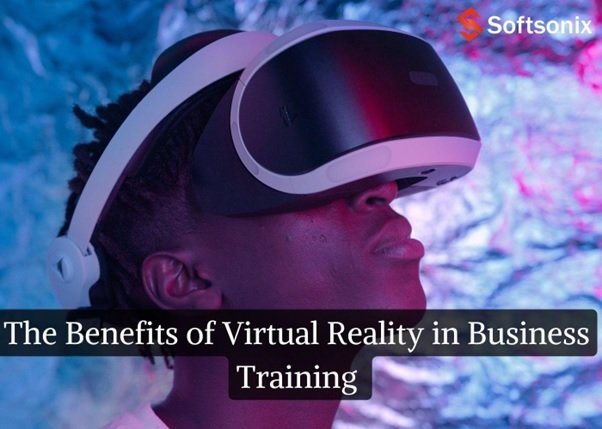Exploring the Clear Differences Between Virtual Reality and Augmented Reality

Credit - Pixabay
Augmented Reality (AR) and Virtual Reality (VR) are excellent examples of the developing world. They experience realistic things for users. VR creates a completely artificial world, whereas AR improves the real world by layering in digital elements. VR uses headsets to provide complete contact, whereas AR connects with everyday devices such as smartphones. Interface style and applications are different. VR focuses on games and simulations, and AR is used for direction, education, and shopping as well. Both technologies have there own strengths that appeal to a wide range of audiences. AR, due to its ease of use, has a chance to reach a larger audience than VR.
In this vast developing era of great technologies. Virtual Reality (VR) and Augmented Reality (AR). They both stand out as two different experiences. Now, Let's move into the basic dissimilarity between them. Try to analyze them. Which can be an increasing technology apart. X
Introduction:
Virtual Reality and Augmented Reality both are so different. Only their methods and purposes differ in great ways. Virtual Reality can create a completely artificial environment. while Augmented Reality looks up the real world. It is completed by a simple method of overlaying digital information.
Also Read -
understanding of Virtual Reality
Virtual Reality immerses users in an imitation environment. Shutting out the real world. Virtual reality often involves wearing a headset. Which in turn covers the user's vision. And replacing it with a computer-generated environment. This artificial world can be anything. Starting from a magical woodland to a developed city.
Virtual reality generally keeps the user inside a three-dimensional experience. The instant of looking at the screen in front of them. The user is generally given the support of a 3D world. which stimulates all 5 senses. To transform computers into a vehicle of the World.
Key Features of Virtual Reality:
- Total Immersion: Virtual Reality provides an all-encompassing experience. Which in turn isolates users from their physical surroundings.
- Interactivity: Users can interact with the virtual environment. With the help of the controllers or gestures. In turn, creating a sense of presence.
- Diverse Applications: Virtual reality finds applications in gaming. In simulations and training scenarios. In turn, offering a very rich and immersive experience.
Unpacking Augmented Reality:
Adding Extra Layers to Reality. Virtual reality can provide a completely different experience. The user feels like they are in another world. They completely get into the new world and shut down from the real world. while experiencing virtual reality users need virtual devices. Such as headset and immersive sound. Motion Controller to experience virtual reality.
In contrast, Augmented Reality is not able to replace the real world. It also adds the digital layers to it. And its function Augmented reality is blending with it. The virtual and the physical worlds. In turn, this allows users to see. and interact with both of them together. Instead of full immersion. Augmented reality enriches the real-world experience. By supplementing it with its knowledge.
Key Features of Augmented Reality:
- Real-World Overlay: Augmented reality enhances the user's perception. Of the real world by superimposing digital content. Examples like graphics, text, or animations.
- Integration with Daily Life: Unlike Virtual reality which requires a dedicated space. Augmented reality integrates into everyday life. With the help of devices such as smartphones or AR glasses.
- Information Enhancement: Augmented reality is used for information Such as displaying navigation instructions. In turn, providing details about objects. The offering context in educational settings.
- Role of mesh in Augmented Reality: In short, The role of mesh in Augmented reality is very important. It permits the exact positioning and interaction of virtual items in the real world. Giving users to have an easy and realistic AR experience.
Comparing Interaction Styles: Virtual vs. Augmented Reality
Interaction is a crucial aspect that distinguishes Virtual reality and Augmented reality experiences.
Virtual reality Interaction:
- Users are in total able to be impressed and interact. The controllers, gestures, or even body movements.
- The virtual environment responds to the user. In actions like creating a sense of agency within the simulated space.
Augmented Reality Interaction:
- Interaction in Augmented reality generally involves the gestures of touch. On devices or responding to real-world elements. By capturing it using cameras.
- Augmented reality is an interactive element. And are overlaid onto the real world. In turn, this enhances the user's interaction. With their immediate environment.
Applications:
Understanding the practical applications of Virtual reality. And Augmented reality helps illuminate their unique strengths.
Virtual Reality Applications:
- Gaming: Virtual reality offers an unparalleled gaming experience. In turn, immersing the players in fictional worlds and adventures.
- Simulations: Starting from the flight simulators to medical training. Virtual Reality provides realistic simulations. For the various industries.
- Virtual Tourism: Develop exotic locations starting from comfort. Of the home through virtual travel experiences.
Augmented Reality Applications:
- Navigation: Augmented reality helps the users. In navigating unfamiliar places by overlaying directions. Into the real world.
- Education: Augmented Reality enhances learning by simply providing additional information. Including the 3D models. And interactive elements in textbooks.
- Retail: Augmented reality is used in retail for virtual try-ons. Product information overlays it. And it in turn enhances the shopping experience.
Augmented reality has so many applications in our daily lives. For example in the field of education many schools as well as organizations. Use augmented reality to educate the students and make them learn the concept.
In a clear way interior design and furniture also use the argumentative reality. maintenance and repair for navigation purposes. It is also used in the field of Healthcare. In entertainment, augmented reality is in great demand. Automobile industry and the field of education also.
The Hardware Factor: Devices That Drive the Experience
Virtual Reality Hardware:
- Virtual reality focuses on specialized headsets. Such as Oculus Rift, HTC Vive, or PlayStation Virtual Reality.
- These headsets have an external sensor. To track movements. Which creates a dedicated Virtual reality space. A virtual reality headset. Consist Of small high-resolution OLED or LCD. Which provides separate images for each. The eye for graphics and a 3D virtual world.
Also Read -
Augmented Reality Hardware:
- Augmented reality experiences are with the help of smartphones, and tablets. Augmented reality glasses like Microsoft HoloLens or Google Glass.
- The accessibility of Argumentative reality devices makes it so much easier. For the users to integrate Augmented reality into their daily lives.
Conclusion:
In turn, Virtual Reality allows the users. To enter into the world of artificial environments. Which in turn offers a profound escape. While Augmented Reality enriches the real world. with the help of digital marketing enhancements. In creating a harmonious blend. Each of these technologies is unique. To strengthen up making it suitable for different applications. It's appealing to diverse audiences. These immersive technologies can continue to evolve. With their impact on entertainment. It in turn Education in every life. It provides a variety of exciting experiences and possibilities.
One can use augmented reality Technology with a tablet or mobile device. whereas virtual reality requires a headset. This means that Augmented reality can reach a larger audience. whereas Augmented reality cannot generate more mansion impact. And give an engaging experience rather than an argumentative reality.








